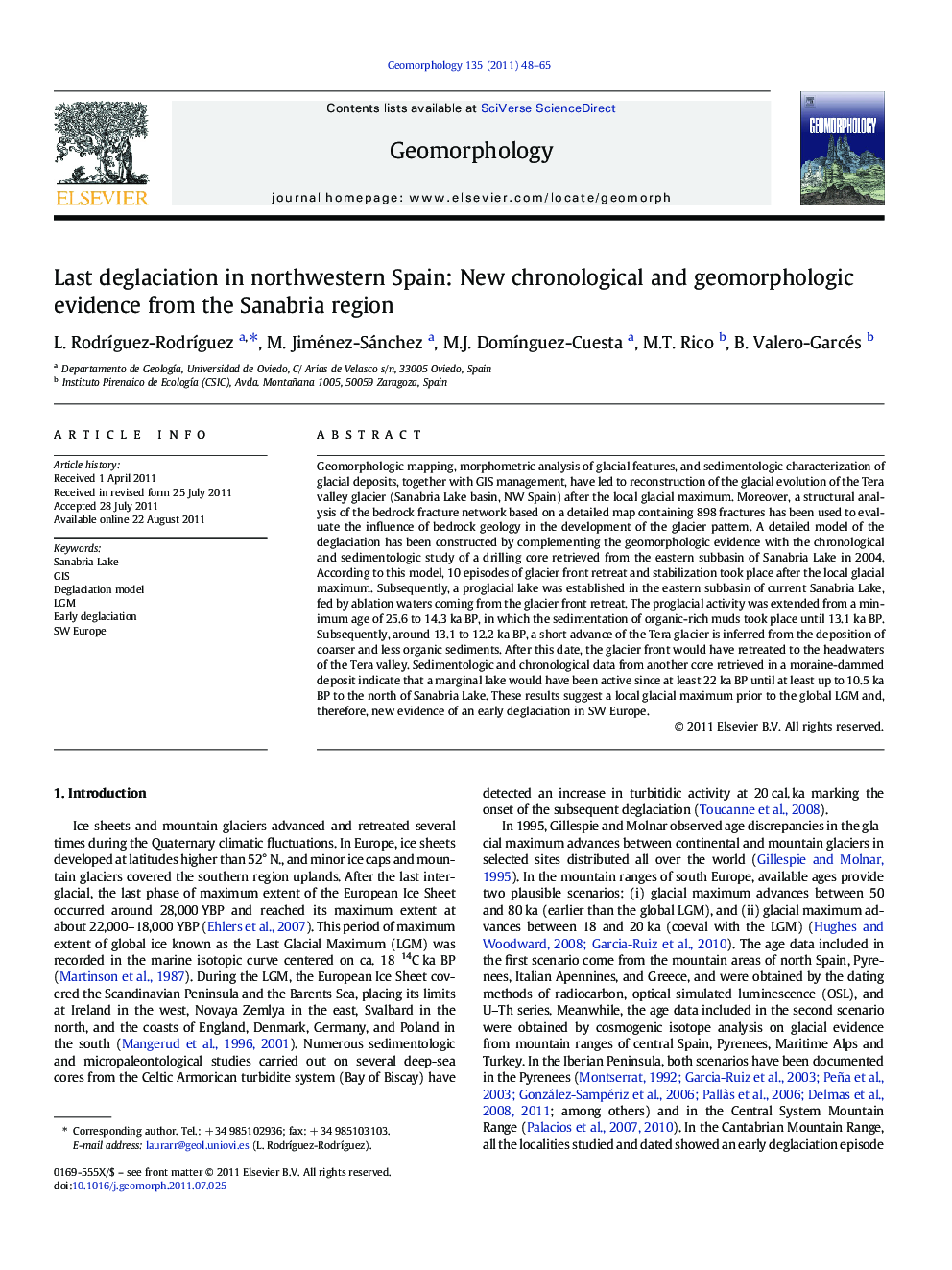| کد مقاله | کد نشریه | سال انتشار | مقاله انگلیسی | نسخه تمام متن |
|---|---|---|---|---|
| 4685430 | 1635491 | 2011 | 18 صفحه PDF | دانلود رایگان |

Geomorphologic mapping, morphometric analysis of glacial features, and sedimentologic characterization of glacial deposits, together with GIS management, have led to reconstruction of the glacial evolution of the Tera valley glacier (Sanabria Lake basin, NW Spain) after the local glacial maximum. Moreover, a structural analysis of the bedrock fracture network based on a detailed map containing 898 fractures has been used to evaluate the influence of bedrock geology in the development of the glacier pattern. A detailed model of the deglaciation has been constructed by complementing the geomorphologic evidence with the chronological and sedimentologic study of a drilling core retrieved from the eastern subbasin of Sanabria Lake in 2004. According to this model, 10 episodes of glacier front retreat and stabilization took place after the local glacial maximum. Subsequently, a proglacial lake was established in the eastern subbasin of current Sanabria Lake, fed by ablation waters coming from the glacier front retreat. The proglacial activity was extended from a minimum age of 25.6 to 14.3 ka BP, in which the sedimentation of organic-rich muds took place until 13.1 ka BP. Subsequently, around 13.1 to 12.2 ka BP, a short advance of the Tera glacier is inferred from the deposition of coarser and less organic sediments. After this date, the glacier front would have retreated to the headwaters of the Tera valley. Sedimentologic and chronological data from another core retrieved in a moraine-dammed deposit indicate that a marginal lake would have been active since at least 22 ka BP until at least up to 10.5 ka BP to the north of Sanabria Lake. These results suggest a local glacial maximum prior to the global LGM and, therefore, new evidence of an early deglaciation in SW Europe.
► The Sanabria Lake basin (NW Spain) was covered in the Pleistocene by glaciers with distribution patterns strongly influenced by bedrock geology.
► Glacial ice surface has been mathematically modeled for the local glacial maximum, providing estimation values of the ice thickness and volume up to 450 m and 22.9 km3 respectively.
► The glacial front suffered 10 retraction-stabilization episodes during the deglaciation, each one marked by a terminal moraine.
► Afterwards, the proglacial sedimentation started 25.6 ka BP ago in the Sanabria Lake, implying an older age for the local glacial maximum than for the global LGM.
► This data constitutes a new evidence of an early deglaciation in the SW European Mountains.
Journal: Geomorphology - Volume 135, Issues 1–2, 1 December 2011, Pages 48–65